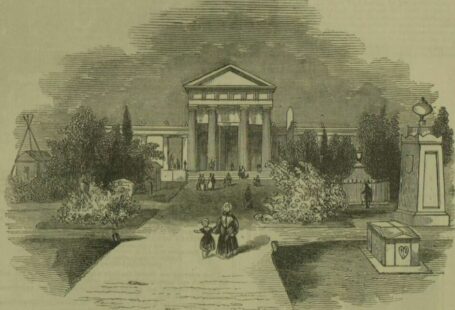Novelist Edwin Muir attempted in 1926 to identify those writers who were ‘influencing the development of literature’ (Nottingham Journal, October 1926) in a series of essays entitled Transition. His choices, which included Virginia Woolf, James Joyce and D.H. Lawrence, amongst others, survived the test of time and as such represent the most celebrated authors of the modernist period.
Using reviews taken from the pages of the British Newspaper Archive, and limiting our search to only those written in the 1920s, in this blog we will explore the contemporary reactions to these progressive, experimental, and, at times, divisive writers.
Want to learn more? Register now and explore The Archive
Virginia Woolf – A Room of One’s Own
Muir praises Virginia Woolf, leading member of the Bloomsbury Group and pioneer of the stream-of-consciousness narrative style, for her quality of intelligence, which she has ‘in high degrees.’ Indeed, according to Muir, the only other contemporary novelist who can compare in this regard is A Room With a View author E.M. Forster.
Reactions to Woolf’s works are on the whole positive. The Aberdeen Press and Journal, reviewing To the Lighthouse in 1927, calls her ‘one of the most subtle and distinguished of living women writers.’ The Dundee Evening Telegraph, October 1929, goes one further and puts her at ‘the very foremost of living British writers – no other woman of our day approaches her.’
Virginia Woolf | The Graphic | 21 December 1929
As is perhaps apt considering her choice of subject matter, reviewers seem unable to detach Woolf from her femininity. Nowhere is this more apparent than in Oliver Way’s review of A Room of One’s Own in The Graphic.
Way is at first captivated by the essay, as Woolf ‘weaves the familiar spell of delight,’ leaving him enchanted ‘from the first word to the last.’ He praises her ‘just and exquisite’ descriptions of familiar scenes, and her humour. But what Way cannot praise, or even understand, is the subject upon which Woolf writes.
As the Dundee Evening Telegraph relates, in A Room of One’s Own:
Woolf is chiefly concerned with showing how the economic and social position of women in the past has crippled genius and maimed personality…pointing to some of the happy consequences of the feminist movement…musing on what the modern woman, especially the woman of a literary turn, is likely to do with her freedom in the future.
And so Woolf argues that given the economic stability of a room of one’s own, Shakespeare’s sister might one day come into existence. It is this theory which provokes Way’s outrage, for ‘Rooms don’t make writers…And after all, it is women who produce these men.’
Virginia Woolf by Jacques-Emile Blanche | Illustrated London News | 27 May 1939
So whilst Way can appreciate Woolf’s writing style, he is not yet ready to appreciate her message, ruling that because women, as mothers, produce great male writers, they should be content with that achievement in and of itself:
But sometimes when I hear women talk of what they might be, and ought to be, or would be, if only this, that and the other were different, they remind me of taxis that should wish to abandon their proper function, which is the safe carrying of passengers, and be themselves, and God knows whither, conveyed. Isn’t it enough to carry the passenger, sometimes magnificently, for a journey down the centuries? Does it matter who sings the songs of the world, so long as they get sung?
Thankfully, the Dundee Evening Telegraph is more balanced, and labels A Room of One’s Own ‘a very wise and beautiful piece of work.’
James Joyce – ‘More Reputation than Readers’
Another 1920s writer who provoked polarised opinions was James Joyce. Muir sees Joyce as an artist who is ‘expressing the age by an uncompromising opposition to it.’ But Joyce’s impact on the age is perhaps best summed up by the intrigue and the mystique he managed to cultivate, making his work, already divisive and ground-breaking, seem all the more momentous and indeed, glamorous.
It was his novel Ulysses which put the Irish writer centre stage of literary conversations in the 1920s, The Sketch in 1929 labelling it ‘one of the most discussed of modern novels.’
James Joyce | The Sketch | 20 February 1929
‘Hailed by many as a masterpiece, and attacked by others’ (Daily Herald, May 1928), its content inevitably divided readers. As the Aberdeen Press and Journal explains:
Those who have waded through the momentous pages – which run to the length of seven ordinary novels – are rabidly divided into two camps: those who praise it as a magnificent work of art, and those who denounce it as thoroughly indecent a highly objectionable and amplified variant of Rousseau’s ‘Confessions.’ It is too, the subject of discussion and curiosity on the part of those who have never been able to secure a copy and who are intrigued by the whispered comments of the initiates.
Because of its scarcity – Ulysses was first published in Paris at a limited run of 1,000 copies priced at £3, with a further run of 2,000 appearing later the same year – it became fashionable, a must-have item, with the price tag to match. According to the Aberdeen Press and Journal copies of Ulysses could fetch up to £10, about £400 in today’s money. The same article concludes:
It is pretty safe to predict that not ten men or women out of a hundred can read it through, and of those who succeed in so doing, half of them do it merely for the satisfaction of being able to say they are among the very few who have read the book.
D.H. Lawrence – Indecent Writing in Decent Prose
Another novelist who thrived on the sensation his work created was D.H. Lawrence. Labelled the ‘poet of escape’ for the age by Muir, Lawrence was famed for his works that centred on the sensual.
One of his works indeed proved too sensual for British publishers, and that book was, of course, Lady Chatterley’s Lover. Banned in Britain, it was published in Paris in 1928. Its notoriety, according to the Derby Daily Telegraph, netted one Parisian bookseller £10,000.
Derby Daily Telegraph | 21 December 1929
Lawrence was not just known for his risqué writings, however. Lawrence was also a painter, and some of his more explicit paintings were removed by police from the Warren Gallery in 1929. A journalist writing for The Bystander went to view these works, and bitingly remarked:
They were quite on a par with the less restrained portions of ‘Lady Chatterley’s Lover;’ the difference in artistic merit being that whereas Lawrence knows his job as a writer and can deal with an indecent subject in decent prose, as an artist he can do rather less with a paint brush than a child of seven without any natural flair.
With his artistic talent questioned, his literary talent was celebrated, and he became something of a working class hero. An advert in the Hartlepool Northern Daily Mail hails him ‘as one of our greatest novelists,’ a feat all the more remarkable as he was a ‘butty’s son’ (the son of a miner).
Hartlepool Northern Daily Mail | 15 February 1929
Whilst Joyce in many ways alienated the subject of his novels – the Dubliners amongst which he had grown up – with his uncompromising depiction of them, Lawrence was able to retain a strong link with the people who inspired his work.
You can discover more about Woolf, Joyce and Lawrence, and other modernist novelists besides, by searching for their names in the British Newspaper Archive – there are always more fascinating stories waiting to be discovered.











